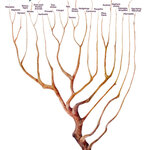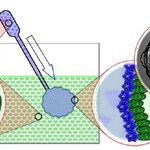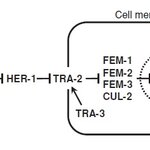Evolution

In a protein coding sequence of DNA, three subsequent nucleotides form codons (see figure 1), which, in turn, form amino acids that will eventually give rise to a protein. Some of these codons, however, are synonymous, meaning that one amino acid can be encoded by several different codons. When an amino acid is preferentially encoded by one of several potential synonymous codons, it is called codon bias.
Figure 1: Example of a codon. (GCA codes for alanine, which is also encoded by the synonymous codons GCT, GCT and GCG.)
(Source: Georgia Southern University, Department of…

New research that includes representatives of 99% of mammalian families, has provided a ‘big picture’ for mammalian phylogeny. By assembling a large and robust DNA matrix, based on sequences of many different genes, a research team led by biologists from the University of California, Riverside and Texas A&M, has examined how different families are related to each other.
Based on this data, the team was able to construct evolutionary trees (see figure 1) and date divergence times. These divergence dates were estimated with the help of a relaxed molecular clock, allowing the team to…

A hot new study in Nature has rearranged the molluscan family tree--with some surprising results!
No one can deny that cephalopods (squids, octos, and cuttles) are the brains of the family, with their cousins the gastropods (slugs and snails) coming in a close second. We'd all assumed that these two groups were closely related, with cephalopods evolving from a gastropod-like ancestor, refining a brain that already existed.
However! As summarized in the New Scientist:
But in Kocot's new family tree, snails and slugs sit next to clams, oysters, mussels and scallops (bivalves), which have much…

The past months there's been some talk about modern humans interbreeding with Neaderthals (see, for example, this post). Today, I came across a nice video that succinctly summarizes the main findings. The video was made by Lynn Fellman, a designer, multimedia artist and writer whose work you can check out at Fellmanstudio. She also has an interesting blog, Sci Art Blog, which is certainly worth a few looks.And now, without furhter ado, the video:

Tuesday evening, Facebook made major changes to its news feed and today the Internet is a hornet’s nest of complaints, protests, and threats. There is a new round of “quit Facebook” memes, and a collective groan of pain from millions of users. Similar dissent occurred when Netflix recently spun off its DVD-by-mail service into a separate company, Qwikster, or earlier this year when dating site OKCupid was purchased by the behemoth Match.com.
It seems that no matter what change a popular website might make, a large number of users will hate it. The same is true for even slight alterations in…

We've often defended Jean-Baptiste Lamarck. Publishing 50 years before Darwin, he can be forgiven for not having 'the greatest idea anyone ever had' and in the last few years, geneticists have gotten on board as well and no longer dismiss out of hand his belief that acquired traits can be passed on to offspring.
Much of the pre-Darwin thinking was teleological and that is why natural selection in evolution met so much resistance. But science quickly won and Lamarck's theory of transformation went onto the ash heap of biological history. Yet in the last decade, we have…

In her 1979 article Gene-Juggling, Mary Midgley criticises Richard Dawkins' book The Selfish Gene with the words:
'Genes cannot be selfish or unselfish, any more than atoms can be jealous, elephants abstract or biscuits teleological.'
This seeming failure to understand what a metaphor is brings to mind the complaint by the robot from Frederik Pohl's 'Midas World':
'Ralph made that faint beeping sound that was the robot equivalent of a sigh: Human(ist*)s were so literal minded!'
*I mean those who study the humanities here, rather than anything to do with religion
But one can still ask…

What is life? As tough questions come, this is a good one. It seems simple at first, but even after great advances in biology and a sizeable increase in understanding how life works, there appears to be no real consensus on life. To quote Carl Sagan:
Yet despite the enormous fund of information that each of these biological specialties has provided, it is a remarkable fact that no general agreement exists on what it is that is being studied. There is no generally accepted definition of life. In fact, there is a certain clearly discernible tendency for each biological specialty to define life…

Sex determination is obviously an important developmental event with great ecological and evolutionary consequences. A large variety of sex determination mechanisms exists, and the evolution of many of these is still relatively poorly understood. Previous work suggests that compensatory adaptations to mutations in involved genes might be relevant in the evolution of these pathways.
To test this, a new study in Evolution uses experimental evolution in Caenorhabditis elegans, the favorite little worm of many biologists (the normal sex determination pathway of these nematodes is illustrated in…

The female orgasm has been a topic of debate among evolutionary biologists (and among many other people as well, of course). Is it adaptive, or a by-product of the male orgasm? Does it suck sperm into the uterus, or strengthens the pair bond? Or did it ‘tag along’ with the development of the male orgasm?
A new study, published in Animal Behaviour, takes a look at the question. The authors argue that, if the female orgasm is an evolutionary by-product, similar genes would lie at the root of orgasmic function in both sexes. Consequentially, opposite-sex twins and siblings would share more…